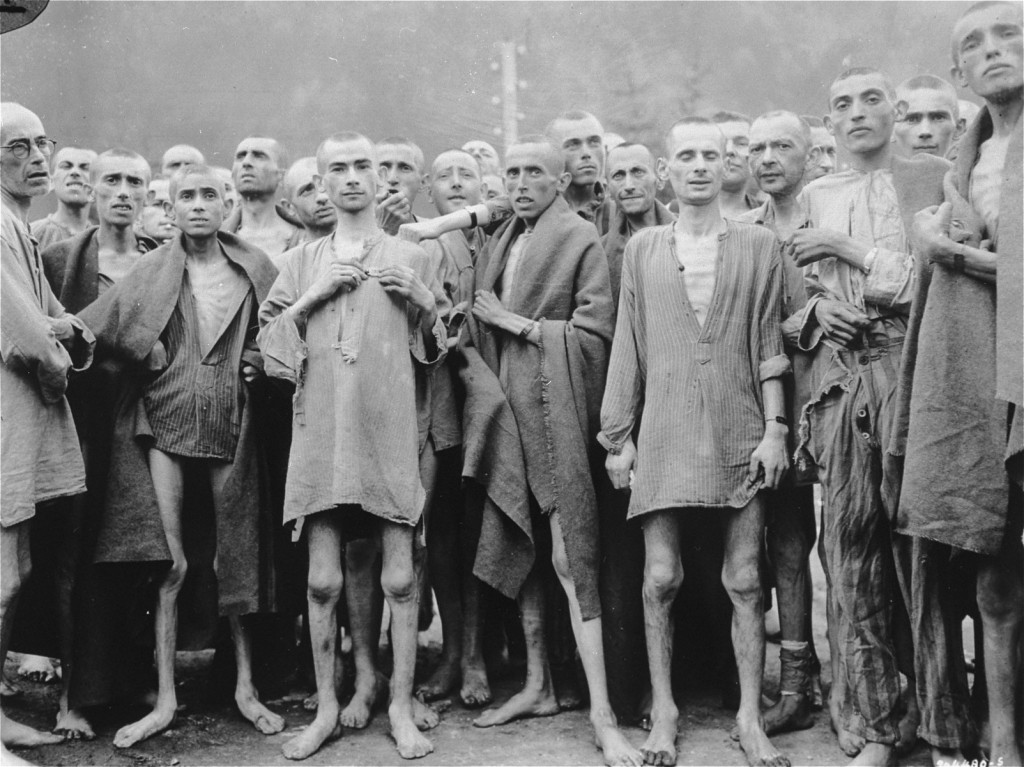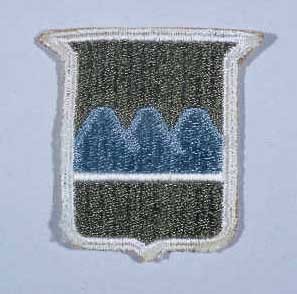The 80th Infantry Division during World War II
In 1985, the United States Holocaust Memorial Museum and the US Army Center of Military History began a program to honor US Army divisions that took part in the Allied liberation of Nazi camps. The US Army Center of Military History defines a liberating division as one whose official records show its presence at a camp within 48 hours of the first soldier’s arrival. The 80th Infantry Division is among the 36 US divisions that have been recognized to date.
Key Facts
-
1
US, British, Soviet, and Canadian troops encountered concentration camps and other sites of Nazi crimes as they advanced across Europe in 1944 and 1945.
-
2
The Allied soldiers liberated sick and starving camp prisoners from Nazi tyranny. They also provided them with food, clothing, and medical aid.
-
3
The United States Holocaust Memorial Museum and the US Army Center of Military History have recognized 36 US divisions for their role in the liberation of Nazi camps.
80th Infantry Division Campaigns during World War II
The 80th Infantry Division was formed in September 1917, several months after the United States entered World War I, and served in military campaigns in France the following year. In 1942, the "Blue Ridge" division was reactivated for military service and deployed to Europe, where it landed on Utah Beach on August 3, 1944, less than two months after the Allied invasion of western Europe on D-Day (June 6).
Soon after arriving in France, the unit engaged German forces in combat in Argentan and other locales in Normandy. It subsequently drove eastward and reached the Saar region of Germany by early December. Later that month, the 80th was diverted to Luxembourg to blunt the German offensive into the Ardennes during the Battle of the Bulge. In January 1945, the 80th returned to the offensive and in the following months drove deep into Germany. After crossing the Rhine in late March, the division advanced through Thuringia, reaching Erfurt, Weimar, and Jena by mid-April. By war's end, the "Blue Ridge" division had advanced south through Bavaria and into Austria.
The 80th Infantry Division and the Liberation of Buchenwald and Ebensee
During its advance into central Germany, the 80th Infantry Division entered the Buchenwald concentration camp on April 12, 1945, to provide relief to the 6th Armored Division, which had arrived the day before. Several weeks later, as the "Blue Ridge" division pushed into Austria, it liberated Ebensee, a subcamp of the Mauthausen concentration camp. Construction of the Ebensee camp had begun in November 1943, and Ebensee started functioning as a subcamp in March 1944. Its purpose was to supply prisoner labor for the construction of elaborate tunnels in the nearby mountains to house underground factories for the production of rockets. Code-named Zement (Cement), the project required backbreaking labor done at a brutal pace. The camp population swelled to more than 18,000 in April 1945.

When troops of the 80th Infantry arrived at Ebensee on May 4–5, 1945, they found some 16,000 prisoners there. A US Army report stated that conditions in the camp were "deplorable" and that several hundred prisoners had died from disease and malnutrition on the day the camp was discovered. The report further stated that
All of the inmates of the camp were badly undernourished and many were suffering from various diseases and ailments. No meals had been served at the camp for three days prior to the arrival of the American Forces in the area.
Shortly after liberation, units assigned to maintaining public health and caring for displaced persons were dispatched to Ebensee to provide food and clothing to the prisoners and to combat the typhus epidemic there.
Recognition as a Liberating Division
The 80th Infantry Division was recognized as a liberating unit by the US Army's Center of Military History and the United States Holocaust Memorial Museum in 1985.
80th Infantry Division Battle Casualty Figures
Hundreds of thousands of US servicemen and women died or were wounded in the fight against Nazi tyranny.
The total number of battle casualties for the 80th Infantry Division in the European Theater of Operations during World War II was 17,087. In this case, “battle casualties” includes all personnel who were unable to fight in battle because they were wounded, missing, captured, or killed.
Among the battle casualties suffered by the 80th Infantry Division, there were 3,500 deaths.
80th Infantry Division Nickname and Insignia
The nickname of the 80th Infantry Division, the "Blue Ridge" division, refers to the Blue Ridge Mountains. The Blue Ridge Mountains run through the states of Pennsylvania, West Virginia, and Virginia. The majority of the soldiers who formed the 80th during World War I were from these states. The 80th’s insignia or patch is in the shape of a badge or shield. Its upper corners are slightly winged. The bottom of the patch has rounded corners and a peak that points down in the center. The patch is framed by a white thread and the background is khaki-colored. Across the middle of the patch are three light blue mountain peaks resting on a white “horizon” or horizontal line.

Footnotes
-
Footnote reference1.
In the aftermath of World War II, the US Department of the Army compiled casualty figures for US Army personnel. The US government published these figures in 1953. The report listed casualty numbers for the US Army for the period from December 7, 1941 (Pearl Harbor) through December 31, 1946, when US President Harry S. Truman officially declared the end of war hostilities. Army Battle Casualties and Nonbattle Deaths: Final Report, 7 December 1941-31 December 1946, Prepared by the Statistical and Accounting Branch, Office of the Adjutant General, Under the Direction of the Program Review and Analysis, Division of the Comptroller of the Army, O.C.S., (Washington: Department of the Army, 1953), p. 3-4, 84-89.
Critical Thinking Questions
What challenges did Allied forces face when they encountered the camps and sites of other atrocities?
What challenges faced survivors of the Holocaust upon liberation?

